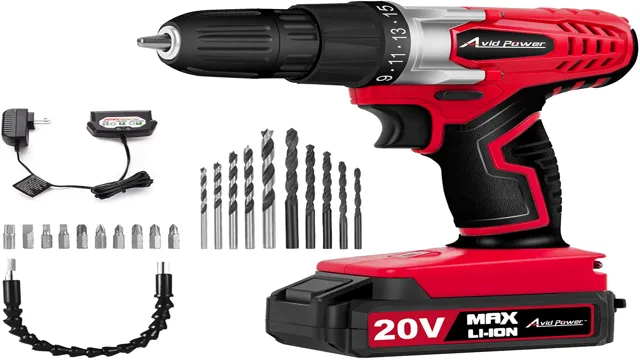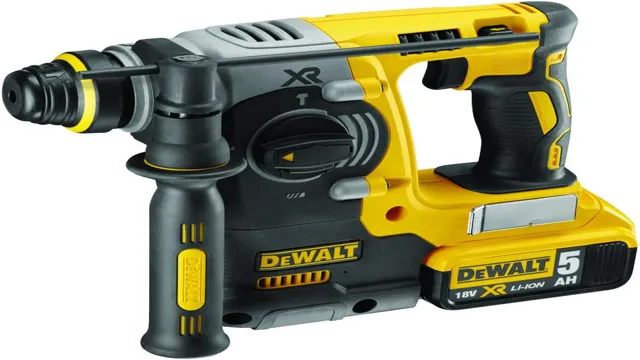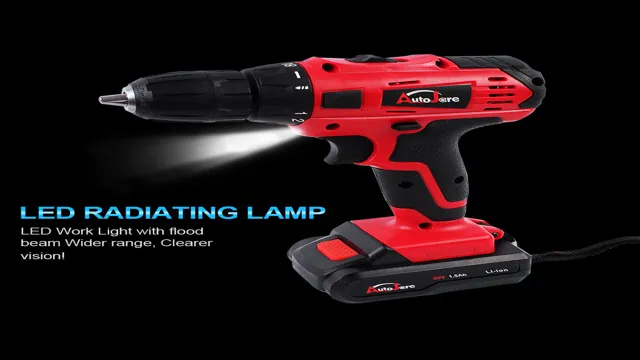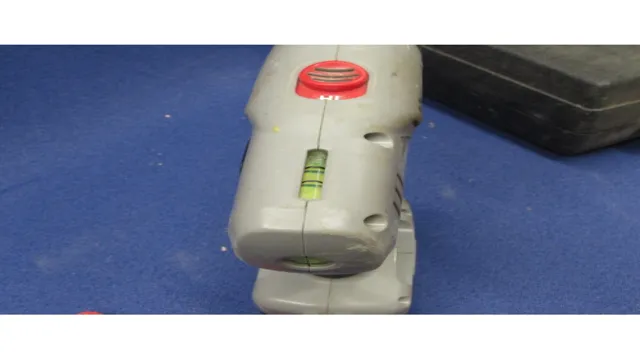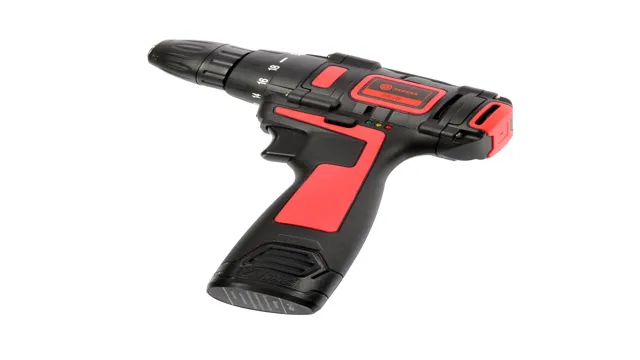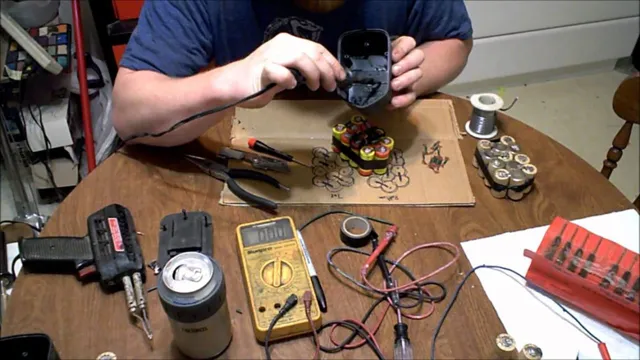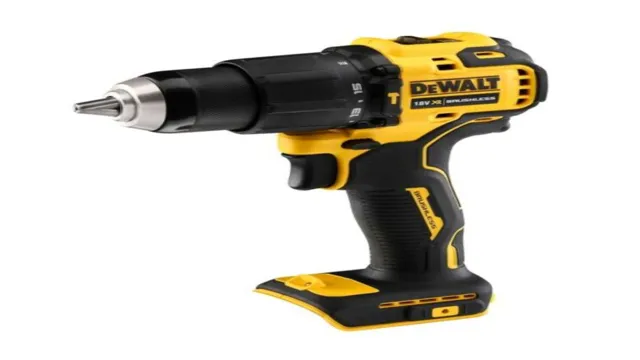Can You Use a Cordless Drill with a Pacemaker? Explore Precautions & Guidelines.
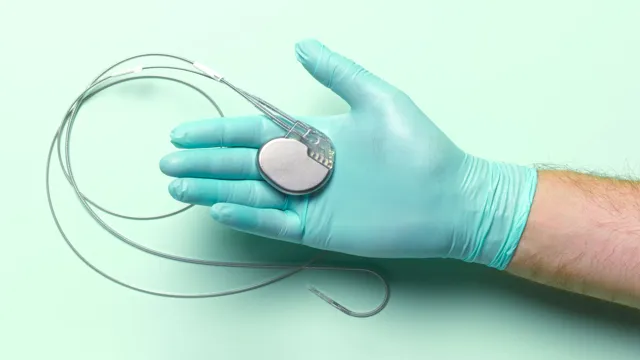
Have you recently had a pacemaker implanted and are wondering if you can still use your cordless drill? Well, the answer is not a straightforward one. While it is possible to use a cordless drill with a pacemaker, there are some precautions you must take to ensure your safety and avoid any potential risks. Some pacemakers are designed to withstand electromagnetic interference from tools such as drills, but this is not the case for all pacemakers.
It’s essential to check with your doctor or pacemaker manufacturer before using any power tools, including cordless drills. Moreover, using a cordless drill involves a fair amount of physical exertion, which could cause your heart rate to spike. Therefore, it’s crucial to monitor your heart rate closely while using the drill and take breaks as needed.
Listen to your body and don’t overdo it. In conclusion, it’s possible to use a cordless drill with a pacemaker, but you must make sure that it’s safe for your particular pacemaker. By taking the necessary precautions and monitoring your heart rate, you can safely enjoy your DIY projects without risking your health.
Understanding Pacemakers
If you have a pacemaker, you may have some concerns about using power tools like a cordless drill. While it’s true that pacemakers can be affected by electromagnetic fields, the risk of using a cordless drill is actually very low. This is because the electromagnetic fields produced by these tools are typically very weak and short-lived.
That being said, it’s always best to err on the side of caution and consult with your doctor before using any power tools or electronic devices. They can provide advice on how to safely use these tools without putting your pacemaker at risk. In general, it’s always important to follow safety guidelines when using power tools, whether you have a pacemaker or not.
How Pacemakers Work
Pacemakers are small devices that are surgically implanted into a patient’s chest to regulate the heartbeat. They use electrical impulses to stimulate the heart muscle, coaxing it to beat at a regular rhythm. The pacemaker is composed of two parts: a pulse generator and wires that are threaded through a vein into the heart.
The generator is powered by a small battery and emits electrical impulses that are sent through the wires to the heart. The electrical impulses cause the heart muscle to contract, thereby regulating the heartbeat. The pacemaker is programmed by a doctor to meet the specific needs of the patient and can be adjusted as necessary.
The pacemaker is an important tool for people with heart conditions and has saved countless lives. Overall, understanding how pacemakers work can help patients better manage their heart health and live more fulfilling lives.
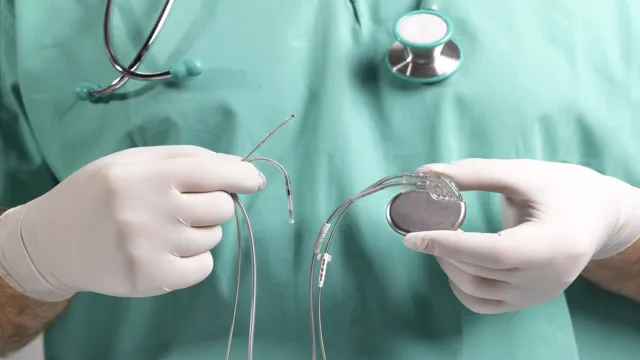
Types of Pacemakers Available
Pacemakers are medical devices that are implanted to help control an irregular heartbeat or slow heart rate. There are different kinds of pacemakers available that offer different features. Single-chamber pacemakers have one wire that connects to the heart’s right atrium or right ventricle.
Dual-chamber pacemakers have two wires that are placed in both the atrium and ventricle of the heart. Biventricular pacemakers have three wires, with one placed near the left ventricle. This type of pacemaker is usually recommended for patients with heart failure.
Additionally, some pacemakers come with advanced features such as rate-responsive pacing, which adjusts the heart’s rate in response to physical activity, and MRI compatibility. Your doctor will determine the type of pacemaker that is best for you based on your specific medical needs. Pacemakers have been helpful in prolonging and improving the quality of life for many people with heart conditions.
Potential Risks
Using a cordless drill with a pacemaker can pose potential risks. Pacemakers are small electronic devices that are implanted under the skin and regulate the heartbeat. These life-saving devices can be sensitive to external magnetic and electromagnetic fields.
This means that when using power tools like cordless drills, there is a possibility that the magnetic field generated by the drill’s motor can interfere with the pacemaker’s function. As a result, it’s essential to take precautions when using power tools if you have a pacemaker. It’s recommended to keep the power tool at least six inches away from the pacemaker and to hold the tool as far away from the chest as possible.
Additionally, it’s essential to follow the manufacturer’s instructions and consult with your doctor before using power tools or engaging in other activities that may generate magnetic fields. Being mindful of these precautions can help ensure the safety of individuals with pacemakers when operating cordless drills and other power tools.
Interference with Pacemakers
Pacemakers are small devices that are implanted in the chest to regulate an abnormal heartbeat. However, these life-saving devices can be interfered with by various electronic appliances. The interference can cause malfunctioning and result in a person’s heart rate being too slow or too fast.
You May Also Love:
Some common electronic devices that can interfere with pacemakers include cell phones, computers, microwaves, and metal detectors. The risks posed by these devices range from minor interference to serious complications that require immediate medical attention. It is important for people with pacemakers to be aware of these risks and take necessary precautions to prevent interference from happening.
For example, it is advised to keep cell phones at least six inches away from the pacemaker to avoid interference. Precautions like these can help pacemaker patients lead a safe and healthy life without any interference from electronic devices.
Appropriate Precautions to Take
When it comes to any sort of medical treatment, it’s important to be aware of potential risks and take appropriate precautions. With telemedicine, there are a few specific risks to keep in mind. For example, there’s the risk of technical difficulties or internet outages that could disrupt a virtual consultation.
Additionally, there’s the possibility that a diagnosis or treatment plan could be incorrect due to a lack of physical examination. One way to mitigate these risks is to ensure that you’re using a reputable and secure telemedicine platform. It’s also important to have a clear understanding of what virtual consultations can and can’t accomplish, and to communicate openly with your healthcare provider about any concerns or questions you may have.
By taking these precautions and staying informed, you can make the most of telemedicine while minimizing any potential risks.
Safe Alternatives to Cordless Drills
Cordless drills are a staple in every DIY enthusiast’s toolkit. However, it’s important to be aware of the potential risks that come with using these powerful tools. The most obvious danger is the possibility of electrical shock while handling a cordless drill.
To avoid this hazard, it’s recommended to use a non-conductive material like rubber grips to insulate your hands from any electrical current. Another risk is the possibility of the drill bit breaking off and causing injury. In this case, it’s advisable to wear protective eyewear and gloves to prevent any accidents.
If you’re looking for a safe alternative to cordless drills, manual hand drills are a great option. These drills are affordable, lightweight, and easy to use. Plus, they don’t require any electricity or battery power, meaning you can use them anywhere without the worry of electrical hazards.
Always exercise caution when using power tools, and choose the safest option for your DIY needs.
Guidelines for Using Cordless Drills with Pacemakers
If you have a pacemaker and need to use a cordless drill, there are important guidelines that you should follow to ensure your safety. First and foremost, it is crucial that you consult with your doctor before using any power tools. Your doctor can advise you on any specific precautions to take based on your individual situation.
It is also important to avoid leaning over the drill or holding it close to the chest area where the pacemaker is implanted. Additionally, it is recommended that you use a cordless drill with low electromagnetic emissions to reduce the risk of interference with your pacemaker. Following these guidelines can help you safely use a cordless drill even with a pacemaker.
Consulting with Your Doctor
If you have a pacemaker, it’s important to talk to your doctor before using any power tools, including cordless drills. Pacemakers are electronic devices that help regulate the heartbeat by sending electrical signals to the heart. Electromagnetic interference (EMI) from power tools can potentially disrupt the functioning of a pacemaker, leading to serious problems.
However, not all power tools are the same when it comes to EMI. Cordless drills are generally safe to use with pacemakers, as long as proper precautions are taken. Your doctor can give you specific guidelines for using cordless drills, such as keeping the drill at least a foot away from the pacemaker, using a low-speed setting, and avoiding prolonged use.
Don’t take any chances with your health – always consult with your doctor before using power tools if you have a pacemaker.
Maintaining Distance between the Drill and Pacemaker
If you or someone you know has a pacemaker and needs to drill into surfaces, it’s important to maintain a safe distance between the drill and the pacemaker. Using cordless drills with pacemakers requires following specific guidelines to prevent potential harm. One crucial aspect is to keep the drill at least six inches away from the pacemaker and to avoid placing the drill directly over it.
Additionally, it’s essential to ensure that the pacemaker’s programming is not interrupted by any electromagnetic interference caused by the drill’s motor. As a safety measure, it’s recommended to turn off the pacemaker during drilling procedures and have a medical professional monitor the pacemaker’s function before and after the procedure. Furthermore, it’s crucial to consult with a physician before attempting to use a drill to avoid any potential risk to the pacemaker user.
Following these guidelines can help to utilize cordless drills safely with pacemakers.
Final Thoughts
If you have a pacemaker, you may be wondering if it’s safe to use a cordless drill. The short answer is that it depends on the type of pacemaker you have and the specific drill you’re using. Pacemakers can be affected by electromagnetic interference (EMI), which is generated by many electronic devices, including cordless drills.
However, modern pacemakers are designed to be more resistant to EMI than older models. If you’re unsure whether it’s safe to use a cordless drill with your pacemaker, it’s best to consult with your cardiologist or pacemaker technician. They can provide guidance based on your specific situation.
In general, it’s important to avoid prolonged exposure to EMI, so if you do decide to use a cordless drill, try to use it for short periods of time and keep it at a distance from your pacemaker.
Conclusion
In conclusion, while a cordless drill may seem like an innocent enough tool, it’s important to remember that any electricity-based devices can potentially interfere with pacemakers. So, if you’re tempted to take on a DIY project while sporting a pacemaker, it’s best to stick to old-fashioned manual tools. Don’t worry, you’ll get the job done with the same level of precision – and the added bonus of a good workout.
“
FAQs
Is it safe to use a cordless drill if you have a pacemaker?
It depends on the pacemaker model and the type of drill. It’s best to consult with a doctor before using a cordless drill if you have a pacemaker.
What type of precautions should you take when using a cordless drill with a pacemaker?
Some precautions to take include standing at least two feet away from the drill, avoiding direct contact with the drill, and turning the drill off immediately if you experience any discomfort or unusual symptoms.
Are there any cordless drills that are specifically designed for individuals with pacemakers?
While there are no drills specifically designed for use with pacemakers, some drills may have a lower electromagnetic field (EMF) output, which can be helpful for those with pacemakers.
Can the electromagnetic field (EMF) from a cordless drill affect a pacemaker?
It’s possible, but it depends on the strength of the EMF and the sensitivity of the pacemaker. It’s important to be cautious and take necessary precautions when using any power tools with a pacemaker.
How can you reduce the risk of electromagnetic interference (EMI) when using a cordless drill with a pacemaker?
You can reduce the risk of EMI by standing at least two feet away from the drill, avoiding direct contact with the drill, and using the drill on a lower power setting (if possible). It’s also important to talk to your doctor before using any power tools with a pacemaker.
Are there any other power tools that may interfere with a pacemaker like a cordless drill?
Yes, other power tools such as electric saws and welders may also generate EMF that can interfere with a pacemaker. It’s important to exercise caution when using any power tools if you have a pacemaker.
What are the potential risks of using a cordless drill with a pacemaker?
The potential risks include EMI, which can cause the pacemaker to malfunction, and physical discomfort if the drill comes into direct contact with the pacemaker. It’s important to talk to your doctor and take necessary precautions before using a cordless drill with a pacemaker.

